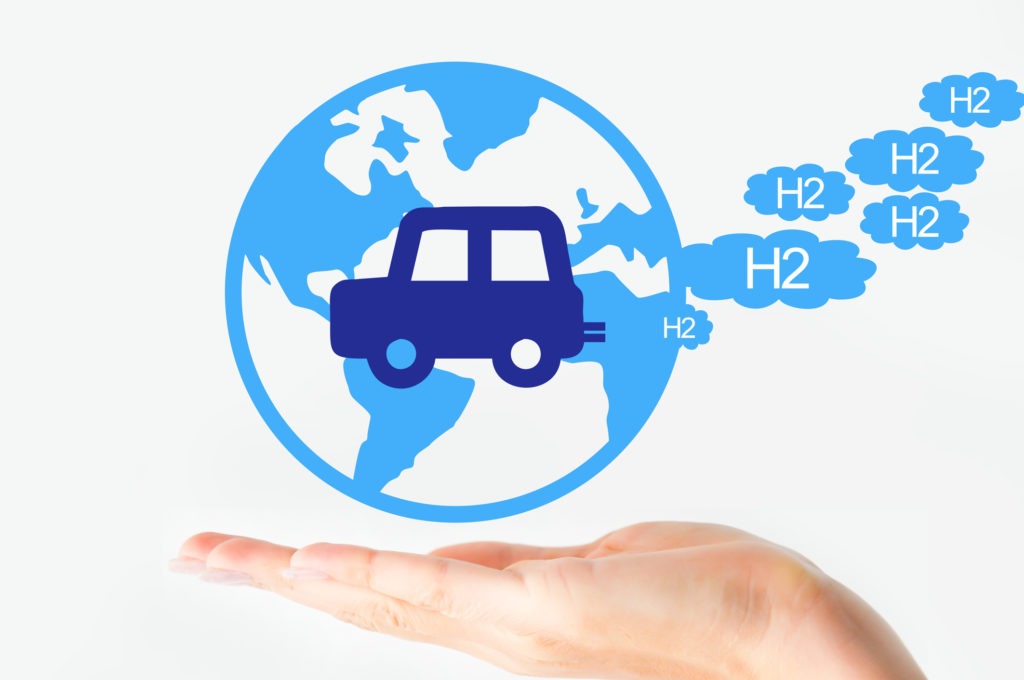Hydrogen power could become viable as solar cell costs rapidly fall, Norway scheme launches
28 April 2017

28 April 2017
As fast-falling costs of solar cells continue to beat expectations, the ultra-clean method of producing hydrogen from electrolysis is becoming remarkably more viable than first thought.
Where to source the hydrogen from has been a long-term dilemma for the nascent hydrogen power industry, with BMW announcing its radical new solution at the Hannover Trade Fair.
It is showcasing a 5-series GT hydrogen fuel cell prototype that sources its high-energy hydrogen fuel from solar-powered electrolysis. Solar cells generate the electricity, and then the electricity drives the ′electrolysis‘ process.
This process electrolyses pure water (H2O), splitting it up into its constituent parts, the desired hydrogen (H2), as well as oxygen (O2). The not needed oxygen can then simply be released into the atmosphere; if the process catches on, an additional side benefit is that this oxygen can help counter global warming, caused by rising CO2 levels in the atmosphere – hence the method’s ′ultra green’ credentials.
Currently, most hydrogen is extracted through other sources such as petroleum and natural gas, which undermines some of the environmental benefits of using the fuel. Until recently, electricity – considered the ‘holy grail’ production method by green-hydrogen enthusiasts – had simply been considered far too energy-intensive to be considered economically viable.
The cheap solar revolution has suddenly transformed the method’s prospects.
BMW has been supportive but cautions with its endorsement of hydrogen vehicles thus far, with it in 2013 entering a strategic alliance with Toyota to combine their hydrogen research and development programmes.
Now BMW officials’ interest appears to be growing, perhaps in light of new solar production options, with BMW now formally outlining plans to explore hydrogen fuel cell vehicles as another option in its portfolio of technologies to achieve emissions-free vehicle mobility.
In Hannover it is promoting the core strengths the technology has over battery electric vehicles – with hydrogen having strong energy efficiency and density, fast refuelling times and much longer range than battery electric vehicles can achieve, and perhaps will ever be able to achieve. Some think hydrogen vehicles could become the ′diesel of the future’, favoured by those who desire long driving ranges and higher fuel efficiency.
For BMW, this hydrogen strategy is also a win-win that supports the German carmaker’s efforts on the solar energy front, with both business units finding newfound synergy.
BMW has carried out calculations with the Fraunhofer Institute for Solar Energy Systems ISE that have provided clear evidence of the benefits of using electrolysis for clean energy production. The electricity can also come from a whole suite of other sources apart from solar, including wind and hydroelectric dams, making the technique highly flexible.
Nevertheless, BMW’s scheme remains in the pilot stage, and if used is likely to be part of the trend towards locally-produced energy.
It is unlikely therefore to threaten industrial production of hydrogen in the near future, with production still gathering apace.
The first large-scale production plan outlined involves using Australia’s vast brown coal reserves in the state of Victoria. However, a key difficulty with this method is that to make the technology green, it requires removing (sequestering) the climate-harming carbon from the coal and re-burying it in old oil or gas wells there. The need for this in the process therefore makes it difficult to control costs and keep the scheme green. The first core market for hydrogen power is expected to be Japan, which is betting on the technology, which it refers to as the ′hydrogen society’, to resolve its energy crisis, following shutting down its nuclear reactors after the 2011 Fukushima disaster. This hydrogen will not only power cars but also houses and even power stations, potentially creating a gargantuan market for the fuel. The country currently relies on extremely expensive liquefied natural gas (LNG) from abroad.
However, now Norway has joined the race against Australia to supply Japan’s hydrogen demand, which could be the saviour it needs. The process looks to be both greener and cheaper. Like Australia, it aims to deliver liquefied hydrogen (LH2) to Japan on tanker ships, but instead will create the hydrogen from renewable sources using its vast hydroelectric dam network, and eventually also wind farms. This has the potential to make the process much simpler and ostensibly cheaper to operate.
Both the Australian and Norwegian schemes are being conducted by Kawasaki Heavy Industries and is part of Japan’s hydrogen society scheme, which will be showcased at the 2020 Olympic Games.